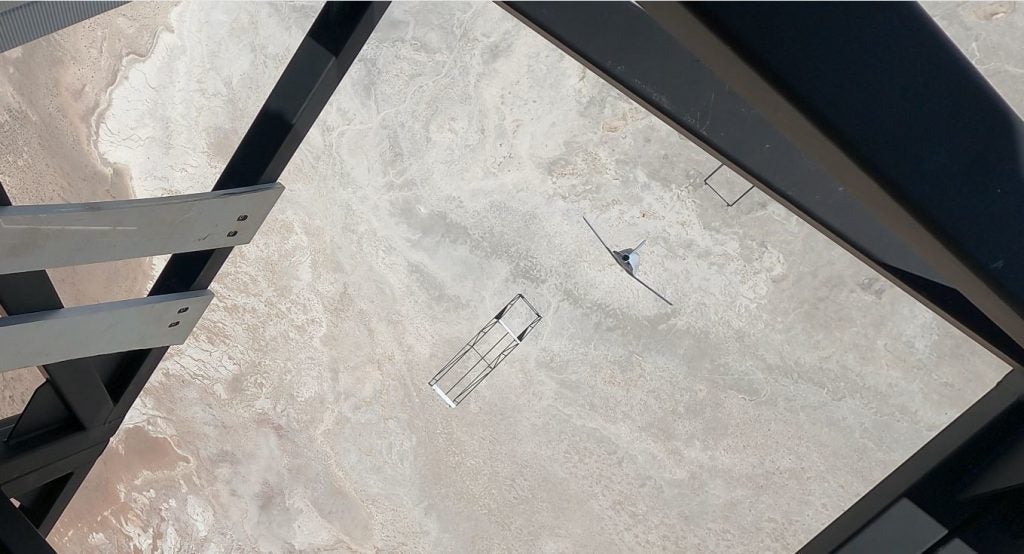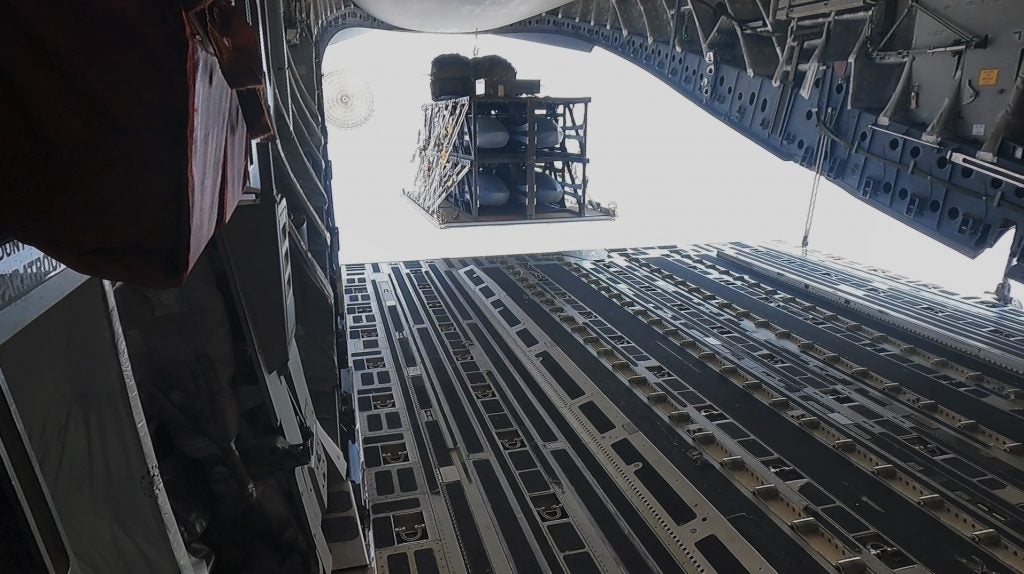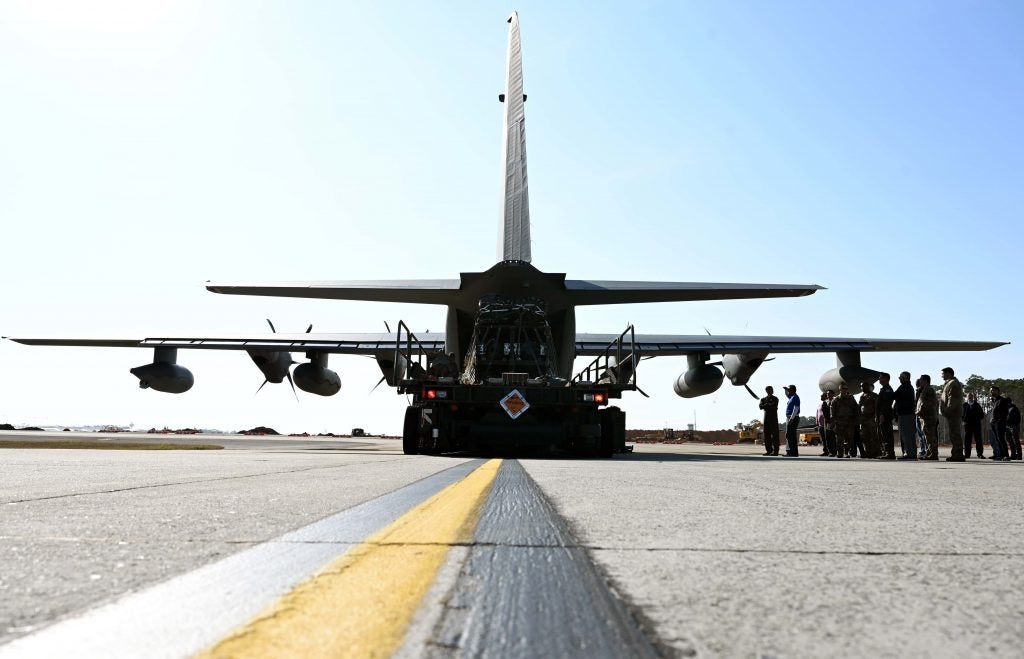Rapid Dragon’s First Live Fire Test Successfully Destroys Test Target
The United States Air Force has announced the success of the Rapid Dragon palletized cruise missile delivery system’s first live-fire test. A current inventory cruise missile with a live warhead was used as the test’s Flight Test Vehicle.
During the December 16 test at the Eglin Overwater Test Range, an MC-130J flown by an Air Force Special Operations Command operational flight crew received new targeting data while in flight. The aircraft agnostic Battle Management System then conducted its first-ever upload of new targeting data into a live cruise missile.
Upon reaching the drop zone over the Gulf of Mexico, the MC-130J airdropped a four-cell Rapid Dragon palletized deployment system containing the Flight Test Vehicle and three mass simulants, with the missiles sequentially released after the box’s parachutes were deployed. The missiles demonstrated safe separation and weapon deconfliction following release in an “unconventional” nose-down vertical deployment method. The missile then deployed its wings and tail to achieve aerodynamic control, before igniting its engine and performing a powered pull-up maneuver. The Flight Test Vehicle then proceeded towards its new target, successfully destroying it on impact.

Following the successful final test, the Air Force plans to conduct a live fire test from a C-17 in spring 2022, demonstrating the Rapid Dragon system’s aircraft agnostic capabilities, in particular the transferability of Rapid Dragon’s retargeting methodology to other strike and cargo platforms. A follow-on program will explore expanding Rapid Dragon to support additional weapons systems and “multiple effects capabilities”, in addition to maturing the current developmental prototype into an operational prototype over the next two years.
The Air Force credits agility and collaboration for the government/industry team behind Rapid Dragon going from a design to a system level flight test in 10 months, followed by a live fire test five months afterwards. The program has used three different aircraft types to date, with MC-130J, EC-130SJ and C-17As used to conduct five system level flight tests.

Air Force Strategic Development Planning and Experimentation Office Rapid Dragon Program Manager Dr. Dean Evans says that the program is a “prime example of a government/industry partnership that embraces this acceleration mindset”, assembling a community of subject matter experts and executing an “aggressive, but well-thought-out, experimentation campaign”. He continued:
“Rapid Dragon was able to accelerate development by building a broad and strong team. We were committed to a ’test often/learn-fast’ culture, dedicated to experimenting frequently and taking calculated risks. In addition to the MAJCOMs and Air Staff, the Rapid Dragon team included the Developmental Test and Operational Test communities, the aircraft and weapons Program Offices, and the mission planners. This collaboration from the onset streamlined the process and accelerated development, involving groups from the program inception that are not normally included at the very early stages, and that has made all the difference.”

